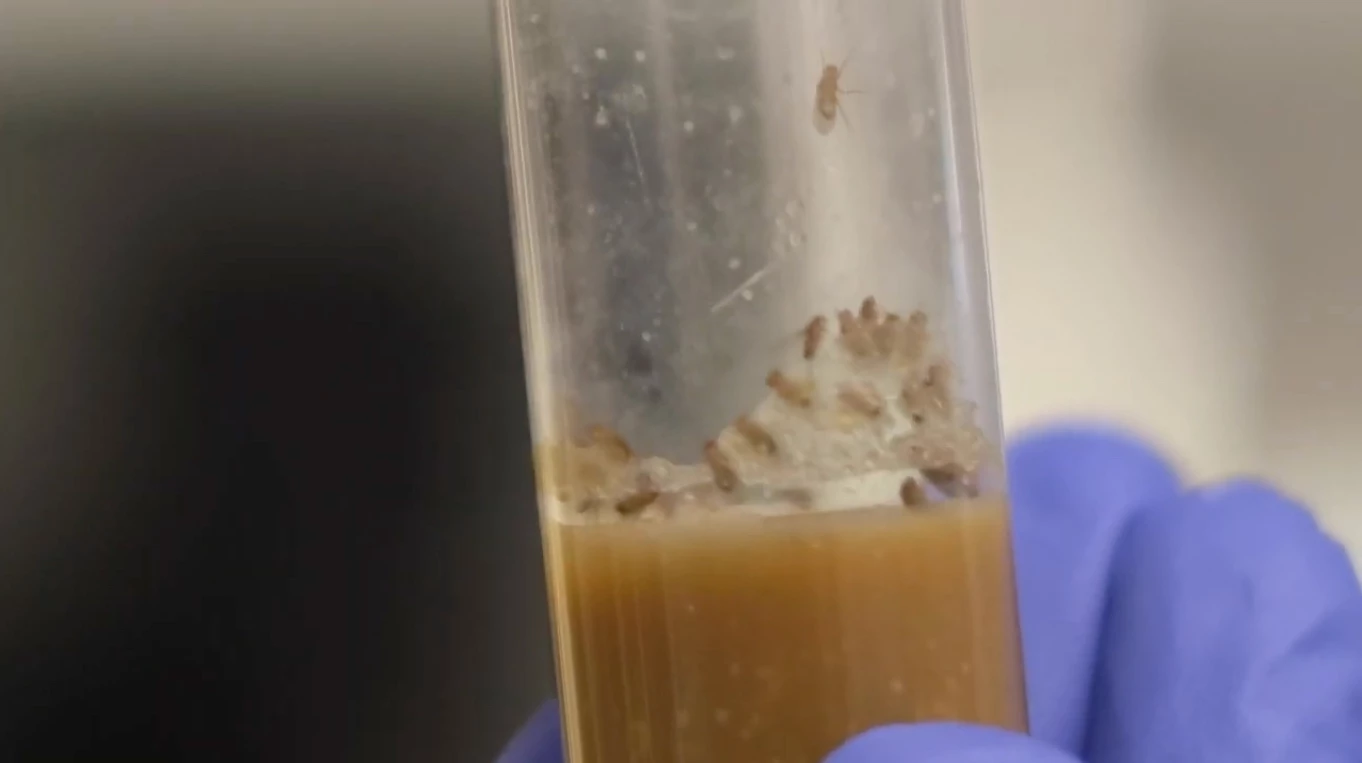The results of a new study in which fruit flies were flown to the International Space Station (ISS) and back could help develop treatments designed to keep astronauts' hearts healthy on long-haul missions to Mars.
Humanity’s wish to explore and understand the impossible depths of space is without question one of the nobler aspects of our nature. Sadly, we aren’t well-equipped, physiologically speaking, to undertake that exploration first-hand.
Our species has evolved to cope with the specific environment and gravity found on Earth’s surface. Ever since astronauts and cosmonauts took their first tentative steps beyond our planet’s dense atmospheric shield at the onset of the space age, we have known that the microgravity environment is intrinsically hostile to the health of a human being.
Astronauts who have spent a prolonged amount of time in space have reported a range of concerning health issues upon returning to Earth, including a significant loss in bone density, muscle atrophy, and the subtle alterations of internal organs and blood flow.
This isn’t to say that we can’t survive in space. For decades now, humans have been living in space aboard the ISS for months on end. But around the world, space agencies are striving to achieve the more ambitious goals of establishing outposts on Earth’s Moon and eventually, Mars.
To make these dreams a reality, humans will need to spend greater lengths of time in microgravity. Scientists are striving to better understand how space affects the human body, and develop therapies to help counteract the troubling side effects.
One vital organ known to be affected heavily by spaceflight is the heart. Ultrasound studies conducted on astronauts aboard the ISS have shown that the organ loses its usual oval shape in the absence of Earth’s gravity, and takes on a more spherical appearance.
Whilst these experiments are useful in studying large-scale structural changes, scientists are keen to gain a greater understanding as to how microgravity affects the organ on a cellular and molecular level, in order to begin tailoring potential treatments.
To this end, researchers launched a population of fruit flies to the ISS for a month-long trip before returning the subjects to Earth to study their hearts. Fruit flies have been used by scientists to study human health for decades, as they share 75 percent of the disease-triggering genes found in humans. Their hearts also resemble the tube-shaped hearts of a developing human prior to the point that the organ develops four distinct chambers.

During their time in space, the unfortunate flies were housed in a specialized box in which they birthed hundreds of baby flies. Those babies went on to spend around three weeks in microgravity, which equates to about half of their entire lives.
Within 24 hours of returning to Earth – before the warping effects of microgravity could wear off – the flies were subjected to an exhaustive battery of tests. This included preserving tissue samples, and capturing video of the subjects’ beating hearts in order to measure how fast they pushed blood around the bodies of the flies, and how well they are able to contract – a metric also referred to as contractility.
It was discovered that the hearts of the flies had shrunk relative to their Earthly brethren, and that their contractility had reduced, rendering them less efficient at pumping blood around the body. Furthermore, the actual structure of the heart had been significantly deformed.
Muscle fibers in the heart that should have been orientated parallel to one another in a healthy fly were found to have become misaligned, and broken away from the surrounding structures that allowed the organ to generate the force needed to push blood around the body.
"In the normal fly heart, the muscle fibers work like your fingers when they squeeze a tube of toothpaste. In the space flies, the contraction was like trying to get toothpaste out by pressing down instead of squeezing," comments Karen Ocorr, co-senior author of the new study and assistant professor at Sanford Hurnham Prebys Medical Discovery Institute in California. "For humans, this could become a big problem."
The fibrous extracellular matrix that should surround the heart of regular non-spacefaring flies was also found to have reduced in mass.
"We were very excited to find several ECM-interacting proteins that were dysregulated in the space flies," says Rolf Bodmer, PhD, director and professor in the Development, Aging and Regeneration Program at Sanford Burnham Prebys and co–senior author of the study. "These proteins weren’t previously on the radar of heart researchers, so this could accelerate the development of therapies that improve heart function by reducing fibrosis."
The scientists intend to continue examining the tissue samples taken from the space flies, in order to probe how their journey may have altered their ability to see, and to determine whether the fly babies may have inherited any abnormalities.
A paper on the study has been published in Cell Reports.





